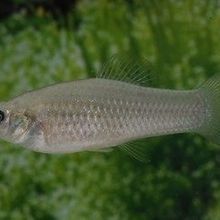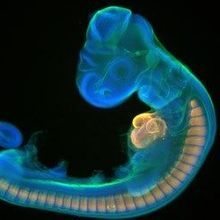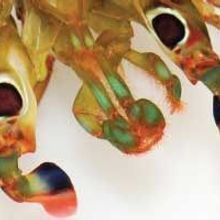Login
Subscribeevolution

Neanderthal Genomes Hint at Species’s Population History
Ashley Yeager | Mar 21, 2018 | 2 min read
DNA analysis gives clues to how the ancient hominin’s population split and how they interacted with modern humans.

Monitoring Mutations with Microfluidics
Ruth Williams | Mar 15, 2018 | 3 min read
A device dubbed the “mother machine” enables real-time observation of mutagenesis in single bacterial cells.

Hawaiian Spiders on Different Islands Evolved Same Disguise in Parallel
Catherine Offord | Mar 8, 2018 | 2 min read
In an unusual evolutionary twist, local stick spiders have come up with an almost identical repertoire of color morphs in multiple locations.

EPA’s Scott Pruitt Doesn’t Buy Evolution
Kerry Grens | Mar 4, 2018 | 1 min read
In audio files from 2005, the future Administrator of the EPA said there’s a lack of “sufficient scientific facts” to back the theory.

Paleoproteomics Opens a Window into the Past
Catherine Offord | Mar 1, 2018 | 10+ min read
Researchers are looking to proteins to explore the biology of ancient organisms, from medieval humans all the way back to dinosaurs.

Image of the Day: Size Matters
The Scientist and The Scientist Staff | Feb 23, 2018 | 1 min read
The male proboscis monkey’s large nose probably evolved in response to female preference and competition between males.

Bats May Have Taken on Viruses To Stay in Flight
Ashley Yeager | Feb 22, 2018 | 2 min read
Dampening the immune response to stay up in the air may have helped bats become tolerant to viral infections.

Strong Tides May Have Driven Ancient Fish to Dry Land
Jim Daley | Feb 15, 2018 | 2 min read
A closer moon and ideal coastal conditions for tide pool formation may have started the evolutionary transition of tetrapods.

Amazonian Fish Genome Challenges Long-Held Assumptions About Asexual Reproduction
Jim Daley | Feb 14, 2018 | 2 min read
Poecilia formosa, an all-female fish species, has a surprisingly robust genome.

Blind Cavefish in Mexico Offer Clues to Sleep Regulation
Catherine Offord | Feb 6, 2018 | 2 min read
Two studies identify a signaling pathway that contributes to the fish’s sleeplessness.

Graduate Student Identifies Dozens of New Fly Species
Jef Akst | Feb 1, 2018 | 3 min read
Over the past seven years, Xiao-Long Lin has characterized nearly 70 new species of nonbiting midges and developed DNA barcodes to aid in future ecological surveys.

An Enduring Partnership
Bob Grant | Feb 1, 2018 | 2 min read
Humanity would be nothing without plants. It’s high time we recognize their crucial role in sustaining life on Earth.

Image of the Day: Ectopic Wings
The Scientist and The Scientist Staff | Jan 24, 2018 | 1 min read
Insect wings may have evolved from multiple origins, say researchers.

Image of the Day: Minions of the Cicada
The Scientist and The Scientist Staff | Jan 9, 2018 | 1 min read
Scientists study the unusual genome evolution of the bacteria that live within a genus of cicadas.

Image of the Day: See You Later!
The Scientist and The Scientist Staff | Jan 8, 2018 | 1 min read
Developmental biologists take a close look at how alligator embryos grow.

Hibernating Rodents Feel Less Cold
Abby Olena, PhD | Dec 19, 2017 | 3 min read
Syrian hamsters and thirteen-lined ground squirrels are tolerant of chilly temperatures, thanks to amino acid changes in a cold-responsive ion channel.

Image of the Day: Moth Resurrection
The Scientist and The Scientist Staff | Dec 18, 2017 | 1 min read
Entomologists have rediscovered a species of moth that was considered lost for 130 years.

Image of the Day: Horseshoe Bat
The Scientist and The Scientist Staff | Dec 4, 2017 | 1 min read
Factors such as humidity and temperature can affect how Rhinolophus clivosus use echolocation.

Insects’ Neural Learning and Memory Center Discovered in Crustaceans
Catherine Offord | Dec 1, 2017 | 4 min read
Aggressive little marine predators, mantis shrimps possess a mushroom body that appears identical to the one found in insects.

Hundreds of Pterosaur Eggs Discovered in China
Kerry Grens | Nov 30, 2017 | 1 min read
The fossil booty includes some eggs with embryo remains inside, and points to group nests involving long-term parental care.